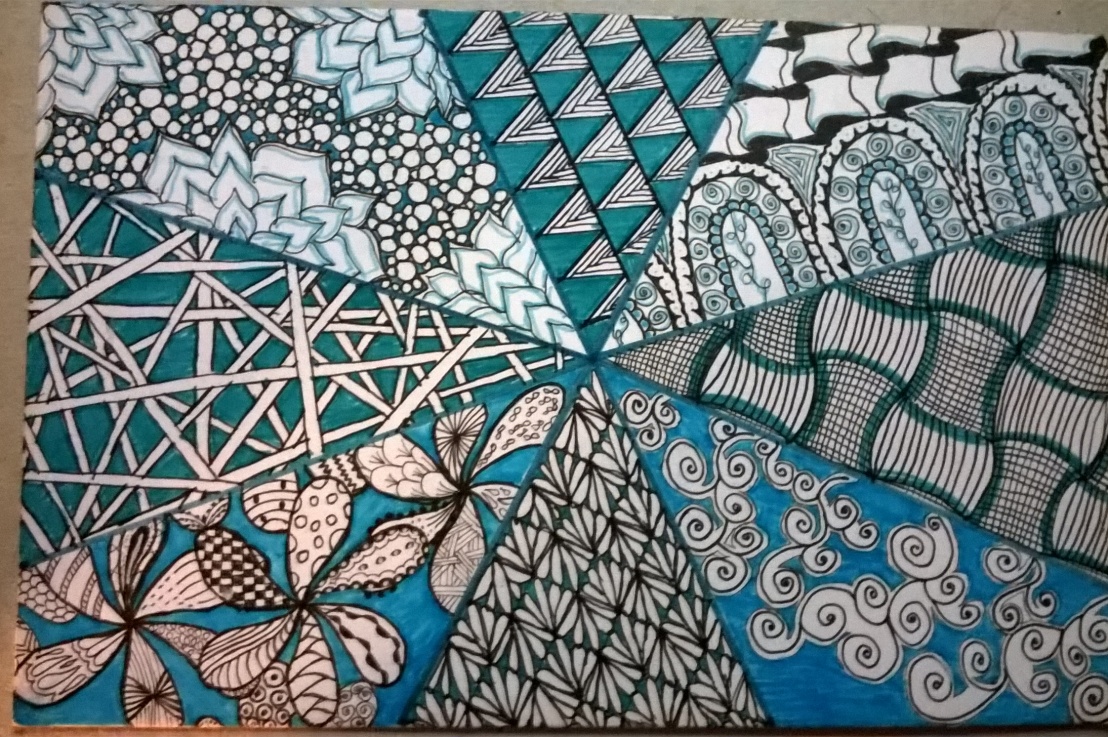Using music can help our classes in several ways. Songs can provide vocabulary, serve as prompts for writing/discussion, illustrate grammar, help with fluency and pronunciation, or be an alternative to reading, all while entertaining and engaging.
As teachers, we tend to get comfortable with using music one way, and then we feel very confused when our students don’t enjoy activities that we planned with so much confidence and care. Here are some ideas we can keep at hand and in rotation so we make the best of our music time in class.
Music Collage: Play a few seconds each of 6-8 different songs. Make them as different as possible in genre, artist and release date. Take no longer than 5 minutes playing the music, and instruct your students to make free drawings as the moment inspires. After all songs have been played, put your students in small groups and have them share and discuss their drawings (5 more minutes).You can finish with all your students together one more time and invite volunteers to share, or show them your own drawings, explain a couple of details and ask for opinions, guesses, etc. The total activity shouldn’t take more than 12 minutes, but provide with lots of speaking practice. You can even select a common theme along the songs, and use it for the final 2 minutes of the discussion and a way to connect to the topic of your class.
Wild words: In this simple activity, you select a song and make 3-5 modifications depending on the level of your students. Make sure to increase the level of difficulty as the song advances to give students a chance to adjust to the material. I personally like to follow this recipe: 1st stanza- choose the right word. 2nd stanza- fill in the blanks. Chorus- organize the lyrics. 4th stanza select the verbs you hear. If the song has more stanzas (not repeated from above) then I may use that material for some T/F or open questions, but it would be mostly on higher levels. I have also used pictures for students to mark the one closest in meaning or asked for some vocabulary definitions. If your song repeats whole stanzas, you could consider these second chances for students to complete an activity, so you don’t need to play the song more than twice.
Song telling: Every song tells a story, however simple or complex this may be. We can use a song as a starting point –select by the teacher if the students level is rather basic, or by the students of they are intermediate an up-, to make a writing and speaking activity. Basic – intermediate levels can use the story in the song to prepare a role-play, write a short story or a cartoon strip. Intermediate – advanced students can have a debate where they respond one song with another, match songs to movies, or use the story of the song to write a newspaper/magazine article, build a debate around the perceived message of the song, etc.
Let me know if and how you would make changes to these ideas, and share some of your own… we can always add some new music to our (work) lives.

 Twaalf bouwstenen voor effectieve didactiek’ (‘Lessons for Learning: Twelve Building Blocks for Effective Teaching’ which is at this very moment being translated into English), written by Tim Surma, Kristel Vanhoyweghen, Dominique Sluijsmans, Gino Kamp, Daniel Muijs and Paul A. Kirschner. PS: We’ll let you know when it has been published in English.
Twaalf bouwstenen voor effectieve didactiek’ (‘Lessons for Learning: Twelve Building Blocks for Effective Teaching’ which is at this very moment being translated into English), written by Tim Surma, Kristel Vanhoyweghen, Dominique Sluijsmans, Gino Kamp, Daniel Muijs and Paul A. Kirschner. PS: We’ll let you know when it has been published in English.